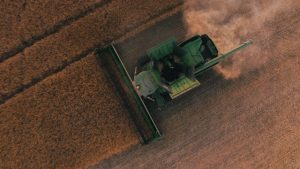 The O-ring installation process is vital to the proper function and operation of numerous mechanical devices and applications. Used in many industrial sectors—transportation, aerospace, agriculture, medical, oil and gas, food, plumbing, and electronics to name a few—the familiar circular, ringed-shaped seals are indispensable mechanical components fitted on valves, pipes, pumps, shafts, couplings, and engines, to secure fuels, refrigerants, lubricants, and oils, for gases, steam, vapor, and water. Installed the right way, o-rings can save companies money, maintenance, and time.
The O-ring installation process is vital to the proper function and operation of numerous mechanical devices and applications. Used in many industrial sectors—transportation, aerospace, agriculture, medical, oil and gas, food, plumbing, and electronics to name a few—the familiar circular, ringed-shaped seals are indispensable mechanical components fitted on valves, pipes, pumps, shafts, couplings, and engines, to secure fuels, refrigerants, lubricants, and oils, for gases, steam, vapor, and water. Installed the right way, o-rings can save companies money, maintenance, and time.
The first step to ensure a long life for an O-ring application is at the time of installation. Care must be given during the installation process for the O-ring to function properly. It should be free of foreign material or substances; it needs to be properly placed and fitted uniformly without twisting or forcing it. In fact, problems that do arise from improperly installed O-rings are usually associated with tearing, overstretching, and twisting and turning during installation. Proper lubrication and additional tape covering can also provide extra protection to help extend the O-ring’s usefulness.
By taking care, when correctly installed, o-rings can prevent leaks and add to the service life of the component. Incorrectly installed O-rings may lead to leakage that could damage the part or machinery, which can lead to downtime, requiring disassembling and reassembling the component. Thus, the correct installation is critical. Here are guidelines to follow when installing O-rings to ensure proper function and to help avoid problems down the road.
6 Guidelines for O-Ring Installation Success
Correct size
The right size O-ring is not only important but necessary for applications to function properly. If the O-ring is too small it will likely tear or break. An oversized O-ring will not provide adequate sealing. Never use force when placing an O-ring. The correct sized part will fit in place easily. To avoid breakage or leaking, use the manufacturer’s suggested O-ring size.
Do not exceed maximum elongation
As O-rings are an elastomeric material, some degree of stretching is expected. To avoid tearing or snapping during assembly, be aware of overstretching and know the part’s maximum stretch point. O-rings stretched beyond the maximum elongation are ineffective. If the O-ring needs to be stretched into place, it should fit evenly on the application and not require overstretching.
Lubricate O-rings
Providing a thin coating of lubricant on the surface of O-rings will increase functionality and extend its life. Using a lubricant for O-ring assembly can help prevent damage to the part. Applying a thin film of lubricant to the O-ring fills in any gaps or spaces where the O-ring joins the mated part or parts, prevents drying out, reduces tension between the surfaces, and fits the part more tightly in place.
Slide O-rings into place on shafts
O-rings should be slid into place on shafts rather than rolled down onto them. Rolling an O-ring into place down a shaft will cause spiraling, which will limit the functionality of the O-ring. A spiral wound O-ring will be easily damaged which may lead to leakage. Slide an O-ring into place by applying a lubricant.
Mating with threaded parts
Mating O-rings over threaded parts can easily lead to nicks and tears if applied improperly. Forcing the O-ring over a threaded shaft can lead to problems quickly. Wrap the threads in masking tape and apply lubricant to slide the O-rings into place easily and effectively. This will protect the O-ring from damage.
Mating with sharp edges
Some installation of O-rings may be around sharp edges or corners. If improperly installed, the O-rings can be easily torn or nicked. The damage may not be visibly apparent, but it will still lead to leakage issues later. Never force O-rings onto sharp edges or corners, and lubricate to ensure the part slides into place easier.


